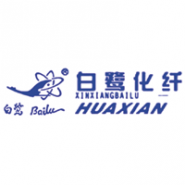Gen


Sustainable Chemical Management
PARTICIPATION IN ZDHC: The company is an active participant in ZDHC, where all of their viscose and modal facilities have joined the ZDHC Supplier Platform and have access to the MMCF Module.
CHEMICAL RECOVERY: All of the company’s MMCF viscose and modal facilities have reached at least the Progressive level in their chemical recovery parameters and limit value, according to Chapter 1: ZDHC MMCF Responsible Fibre Production Guidelines V2.2 (Evaluation will start in 2024)
WASTEWATER: All of the company’s MMCF viscose and modal facilities have reached at least the Progressive level in their wastewater discharge parameters and limit values, according to Chapter 2: ZDHC MMCF Wastewater Guidelines V2.2 (Evaluation will start in 2024)
AIR EMISSIONS: All of the company’s viscose and modal facilities have reached at least the Progressive level in their hazardous chemicals’ air emissions parameters and limit values, according to Chapter 3: ZDHC MMCF Air Emissions Guidelines V2.2 (Evaluation will start in 2024)
Total:
 Risk of sourcing from Ancient and Endangered Forests
Risk of sourcing from Ancient and Endangered Forests
Low Risk
Xinxiang Chemical Fiber published its second CanopyStyle Audit in January 2022, and confirmed low risk for four of five suppliers. A subsequent follow-up audit of the fifth supplier during 2022 confirmed low risk.
 Key Improvements Required
Key Improvements Required
- Accelerate the use of Next Generation fibre in order to meet or exceed the targets set out in the Next Generation Vision for Viscose: 50% by 2030.
- Continue to build awareness of the status of Ancient and Endangered Forests in the countries from which they source their fibre, and provide support for efforts to protect them.
- Continue to use ForestMapper and complementary guidance documents such as the Dissolving Pulp Mill Classification to avoid sourcing from Ancient and Endangered Forests.
- Where virgin fibres are unavoidable and they are not coming from key priority Ancient and Endangered Forests, procure higher volumes of FSC 100% certified inputs from sources that have achieved FSC Forest Management certification on the ground.
 Areas where the company is showing leadership
Areas where the company is showing leadership
Xinxiang Chemical Fiber has made significant gains in the past two years, moving up from light green to a dark green shirt.
Sourcing:
- Has consistently engaged with the CanopyStyle initiative over time, and has proactively addressed risk in its supply chain.
- Increased its procurement of FSC Mixed fibre inputs.
- Uses Canopy’s ForestMapper tool to avoid sourcing from Ancient and Endangered Forests.
Conservation:
- Supported the call for implementing the protection of at least for 30% of the world’s Ancient and Endangered Forests by 2030, in a follow-up a letter from MMCF producers to countries that are party to the Convention on Biological Diversity (CBD).
- Demonstrated an awareness of the status of Ancient and Endangered Forests in the countries from which they source, and efforts to protect them.
- Initiated a plan to reduce carbon emissions by 40% by 2035 and become carbon-neutral by 2055.
Next Gen Solutions:
- Has a product called Bai-Lu Eco which uses pulp containing 10-20% post-consumer recycled cotton, up from 5% last year.
- Is working to incorporate Next Gen fibre – including hotel textile waste and Juncao grass into its products.
Number of man-made cellulosic fibre and dissolving pulp mills + location and production volumes
Xinxiang Chemical Fiber produces a viscose filament yarn with 10-20% post-consumer recycled cotton textiles, called BaiLu-Eco.
Xinxiang Chemical Fiber (Bailu) has two viscose mills (both filament yarn), both located in Xinxiang City, Henan Province, China.
Xinxiang’s total MMCF fibre production capacity is 100,000 tonnes.
Xinxiang Chemical Fiber Co., Ltd also owns a cotton linter mill that provides feedstock, located in the Xinjiang Uygur Autonomous Region, China.
Xinxiang Chemical Fiber (Bailu) produces man-made cellulosic fibre (MMCF) and nonwovens, mainly standard viscose filament yarn. These products contain non-forest-based raw materials which are not assessed in the CanopyStyle Audit, including cotton linters sourced from China. The company’s products are sold to more than 30 countries and regions, such as Germany, Italy, Japan, South Korea, and India.
-
Policy
-
Audit Report
-
List of Suppliers


